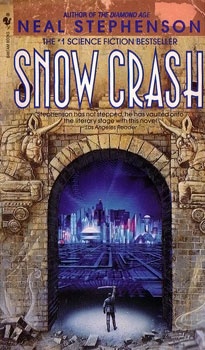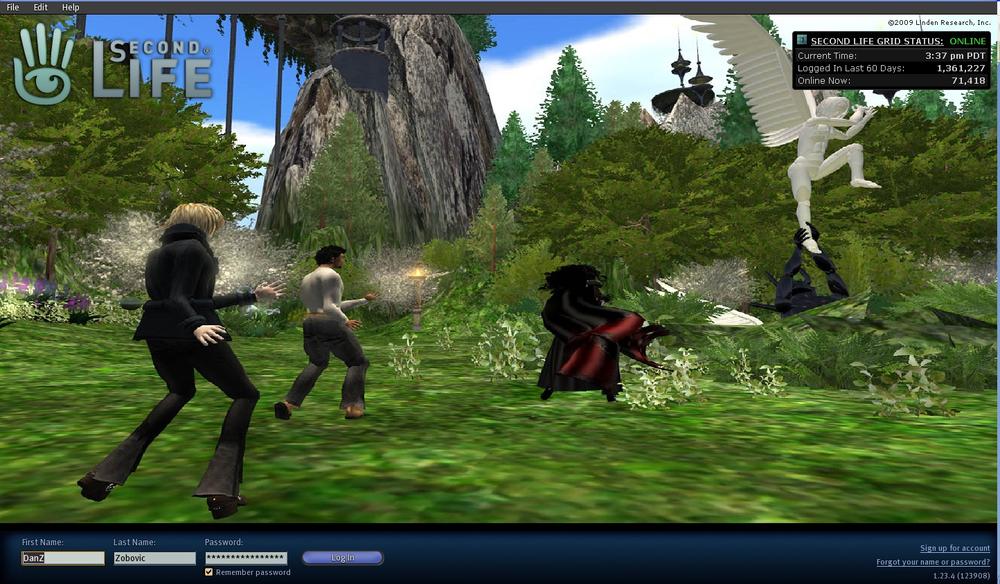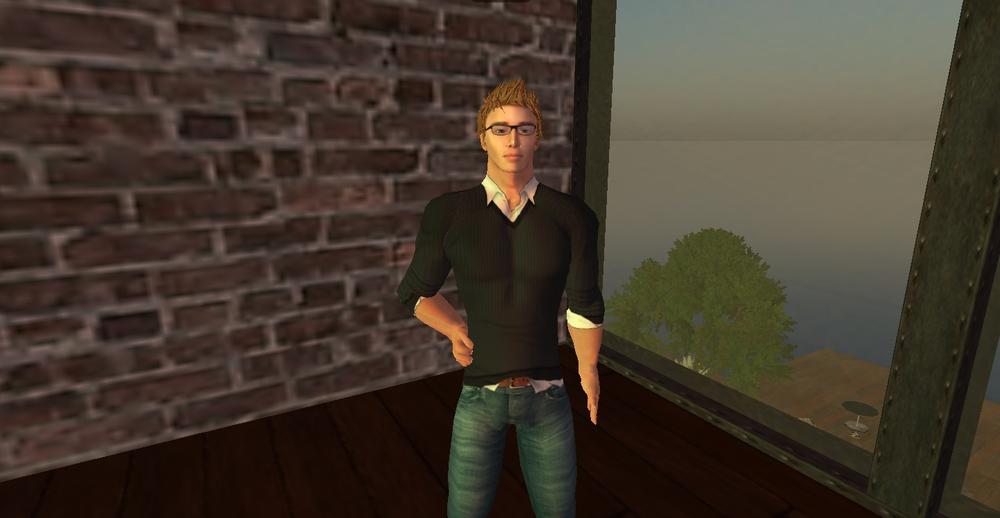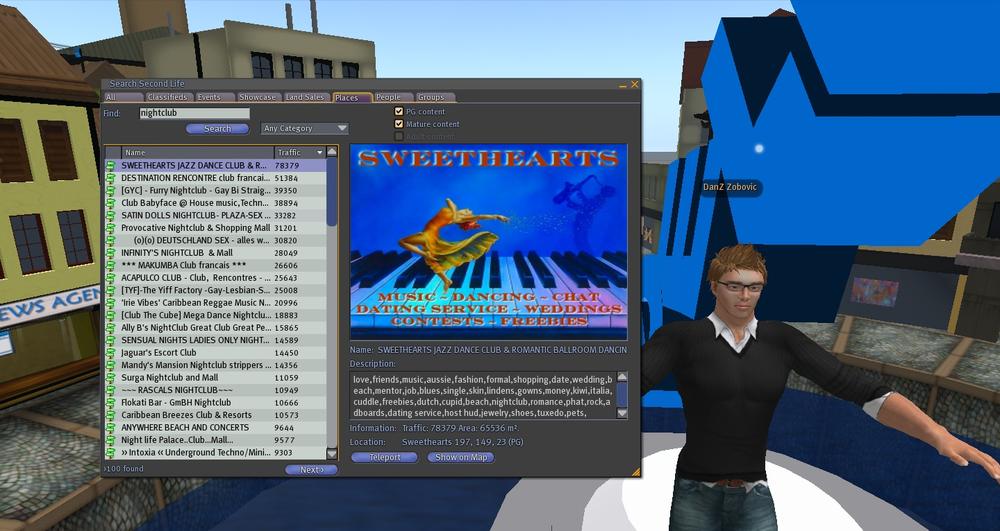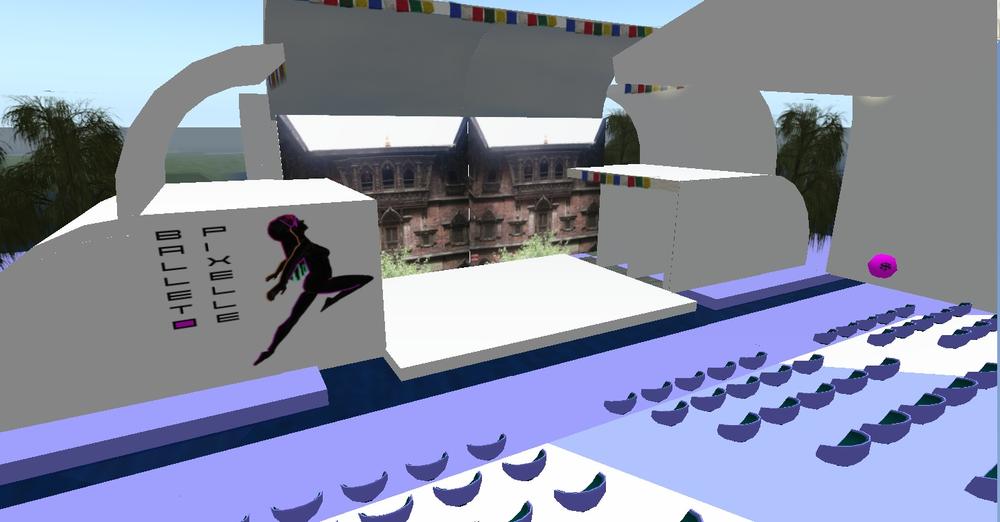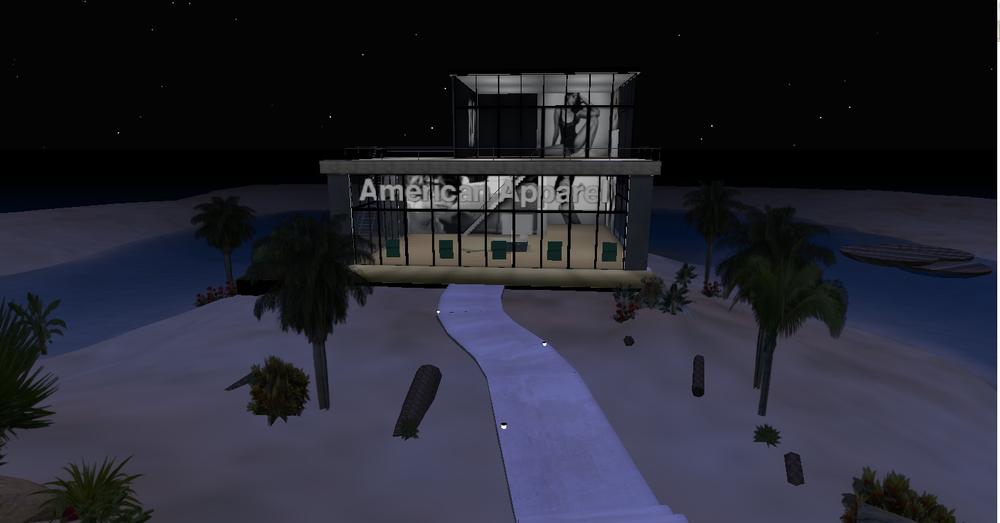Promised by science fiction for decades, large-scale virtual worlds have begun to emerge that are centered on games and social activities. Many extremely popular worlds are games, such as World of Warcraft, but the social marketing possibilities in these worlds are often very limited. Therefore, this chapter will focus on Second Life, where marketers have a variety of techniques at their disposal.
Building places and objects in Second Life requires a technical prowess that is likely too advanced for a new user. If you decide that a virtual world presence would be valuable to your company, a number of companies and individuals can assist you in creating one.
The 1992, Neal Stephenson's cyberpunk novel Snow Crash (Bantam Spectra) inspired web technology in much the same way that the Beatles inspired rock music (see Figure 9-1). The idea behind Google Earth, the use of avatars on computers, and my own interest in social and viral marketing all sprang from different parts of Stephenson's classic work.
The most talked about element in the book was the Metaverse, a virtual reality view of what the Internet could be. In the story, wealthy, famous, and intellectually gifted users logged in with a pair of 3D goggles and socialized in elite and exclusive clubs. Constructed around a single street encircling a featureless planet, the Metaverse was constrained to a stringent set of physical rules modeled on reality. You could be only as tall as you were in real life, for example, and there was no teleporting—only walking, driving, and public transport.
Many multiplayer games have emerged since Snow Crash was published, but these gaming worlds are entirely created and controlled by the designer, with users playing parts like they would in interactive movies. The Metaverse is a set of programming interfaces, a platform upon which users can build their own realities.
In 2003, the virtual world known as Second Life was launched. Founder Philip Rosedale envisioned it to be the real Metaverse, where users could socialize, buy and sell virtual goods, and learn. In this version, you can teleport and fly, and the geography is far more complex, but almost everything else is the same as the book. Because Second Life is user-created and socially driven, there are far more marketing opportunities than in a game-based world such as World of Warcraft or Sims Online.
The dominant virtual world today, Second Life is owned by Linden Lab, with founding visionary Philip Rosedale serving as current chairman of the board of directors. The user demographics resemble average web users, and Second Life "residents" spend widely varying amounts of time logged in or "in-world." I sat down with John Lester, the operations director of the Boston offices of Linden Lab, and he told me that the most important thing for a marketer who is new to Second Life to know is that it is not the Web, but a unique medium accessed through the Web. You're going to need to spend some time in-world to get to know the platform and the community.
John said that even Linden Lab doesn't know exactly how people are going to be using the platform, so you shouldn't worry if you don't, either. Companies such as IBM have leveraged Second Life to build internal tools to allow their globally dispersed workforce to gather and communicate, whereas Dell built an oversized computer that users can walk through, either alone or with other people, sharing their experiences along the way.
Figure 9-2 shows a screenshot of the Second Life sign-on screen.
Second Life financial transactions are conducted in Linden dollars (L$). Sold by Linden Lab for roughly L$265 per U.S. dollar, they can also be turned back into real-world money through Linden Lab and third-party brokers. Buildings in-world can be purchased for amounts equivalent to tens of U.S. dollars, and automobiles for a few bucks.
The physical representation of you in Second Life is your avatar: a 3D figure composed of a skin, body shape, and clothes. Second Life provides basic tools that allow you to customize your appearance, but for best results, you should look into buying one of the professionally produced sets that are widely available and provide endless customization options, from zombies to spacemen—even normal, everyday people (see Figure 9-3).
Linden Lab sells processing power on its servers through the metaphor of land; there is a robust real estate market operated by residents as well. At least one resident has made more than 1 million, real-world U.S. dollars buying and selling Second Life real estate, proving that it is, indeed, big business.
There are two types of land: mainland and estate land. Mainland is created only at the discretion of Linden Lab, whereas estate land is disconnected from the rest of the world and can be created whenever someone buys it. Purchase prices vary on size and type of land and can exceed several thousand U.S. dollars. Monthly fees are also charged to those who own land, ranging from US$5 to US$295.
A common marketing avenue is for a company to buy some land and build an office or visitor center. Unless these are interactive and social, inviting user participation, they quickly turn into empty ghost towns and can be expensive in terms of setup and maintenance.
Second Life features functionality that allows users to create groups that can own land and objects. Group members can communicate with each other and hold virtual events. Groups must have at least two members to remain active. Each user can be a member of up to 25 groups, so experienced residents will only join groups that provide a lot of value to them. When a user joins your group and sets it as her current "active" group, a title you define is displayed above her avatar name. Clever, eye-catching titles are appreciated by users and will encourage them to "wear" yours more often, increasing your exposure to the world. Several systems exist to offer the communication functionality of a group without the expenditure of a user group slot, allowing broadcast messages to your subscribers as well as sending along in-world objects, graphics, or landmarks. These subscription services are popular with users, especially power users with no group slots to spare.
Most travel in-world is done by point-to-point teleportation, meaning that advertising through banners and billboards is essentially useless in terms of the real-world metaphor of the roadside billboard. If someone is bored somewhere, he can instantly be somewhere else—your competition is always only a few clicks away. You facilitate visitor travel to your site by providing landmarks, which are like World Wide Web bookmarks, and allow the user to easily return to your site. Landmarks can be made by the user through the viewer client, but if you provide the landmarks yourself, you can keep track of how many you have handed out, thus giving you a picture of how engaged your users are by noting how many might like to return!
One of the primary ways for Second Life residents to find people, places, groups, and services in-world is through the built-in search functionality (see Figure 9-4). Results are ranked by relevance to the search term entered and a traffic score. Simply put, the more people that frequent a specific place, the higher it will appear in the search results. The easiest way to help people find you is to write a good parcel description with well-chosen keywords relevant to your site.
Linden Lab maintains a web-based linking system, in which users can create HTTP links that allow you to instantly teleport to a specific location from a link in a web browser. If your company has built a presence in-world, a SLurl can be used to link visitors from your website—as well as from your other social media efforts—to your Second Life offices. SLurls can, for example, be packed into a shortened URL and posted with an announcement of an in-world event on your Twitter account. Linden Lab provides brand usage advice as well as logos you can use on your pages at its website, http://secondlife.com/corporate/brand/insl/.
A point John made emphatically is that marketers and individuals in Second Life shouldn't feel like they have to do everything themselves; a great strategy is to find something that residents are doing successfully and that fits with your core values, and then sponsor it.
For instance, a popular group in-world, Ballet Pixelle, organizes some well-attended dance performances and was struggling to find a venue that could keep up with its growing audiences. IBM is known in the real world for sponsoring the arts, and when it heard of Ballet Pixelle's difficulties, the computer company built a theatre for them. Now when the troupe delivers their 90-minute shows, viewers are being subtly exposed to the IBM brand (see Figure 9-5).
Figure 9-6. Stores and boutiques where you can buy just about anything are available in-world. This is an image of the now-closed Second Life American Apparel store at night.
Building things is a pretty complex task to do well, so if there's something specific you need or want, there's a pretty good chance someone else has already created it; if not, you can easily find someone who is a wizard at building and scripting in-world. Linden Lab maintains a directory of service providers that range from full-service solution agencies to individual contractors, and some of these providers have been vetted by Linden Lab to ensure the reliable delivery of services. The company also owns XStreetSL.com, an Amazon-for-Second-Life marketplace where third parties sell virtual goods. There are also countless stores and boutiques in-world, where you can buy everything from clothes to cars to furniture (see Figure 9-6).
Perhaps the most important thing that John said in my conversation with him is that when you compare a Second Life presence with a website, you need to understand that with Second Life, you won't be getting millions of eyeballs, but the people who do interact with you in-world will be much more engaged. A visitor to your website may spend a few minutes interacting with your brand, whereas a visitor to your island or virtual store might spend an hour or more.
Virtual worlds offer an opportunity to engage your audience in immersive experiences.
Spend a lot of time in-world to understand the culture before you start promoting.
Second Life is a tricky place to support marketing efforts; find an experienced resident to help you.
Customize, customize, customize. Ensure that your land, avatar, and objects reflect your brand.
Find already successful things in-world and leverage them like IBM did with Ballet Pixelle.

